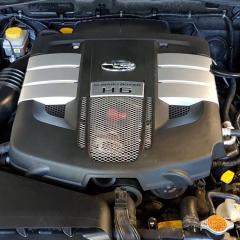Leaderboard
-
in all areas
- All areas
- Articles
- Article Comments
- Article Reviews
- Discounts
- Discount Comments
- Discount Reviews
- Videos
- Video Comments
- Video Reviews
- Articles
- Article Comments
- Article Reviews
- Tutorials
- Tutorial Comments
- Tutorials Reviews
- Images
- Image Comments
- Image Reviews
- Albums
- Album Comments
- Album Reviews
- Events
- Event Comments
- Event Reviews
- Topics
- Posts
- Status Updates
- Status Replies
-
Custom Date
-
All time
February 28 2013 - May 6 2024
-
Year
May 6 2023 - May 6 2024
-
Month
April 6 2024 - May 6 2024
-
Week
April 29 2024 - May 6 2024
-
Today
May 6 2024
-
Custom Date
10/21/2015 - 10/21/2015
-
All time
Popular Content
Showing content with the highest reputation on 10/21/2015 in all areas
-
I got the dreaded Check Hybrid, Check VSC and Check EBC warning lights. Fault code readings P0A80 Hybrid and P3017 (battery cell block number 7 fault). Having gotten a quote for around €6000 to fix it, I decided to do it myself. I ordered a battery cell on ebay for €45.00 delivered to Ireland. Tools needed: Socket set with 8mm, 10mm and 12mm. Flat head screwdriver, long nose pliers and a multi meter to read voltage. (You may also need a slow trickle 12v battery charger, I'll explain later). Time needed: about 4 hours, more if your connections a very dirty. 1: Remove ALL carpeted paneling from the boot (trunk if you're in the US). This is done by inserting the flathead screwdriver into the black plastic rivets and popping them out. Remove the boot flooring too, just leave the tool tray in place. You will need the 10mm socket to remove the rear boot floor luggage anchor points once you've popped open their plastic covers. The upper hanging points need to be squeezed to remove. Disconnect the power supply to the light on the right hand panel. 2: Remove the orange circuit breaker on the HV battery by sliding to the right and then pulling towards you. 3: Remove the black air duct on the bottom of the HV battery by popping the 2 black plastic rivets. 4: Unplug the power supply to the white cooling fan on the upper right of the HV battery and remove the 2 nuts holding on the fan. This should allow the 2 upper black ducting to move sufficiently to be able to remove them. 5: Open the panel covering the 2 Orange Cables (3 x 8mm nuts) and disconnect the 2 orange cables, (you can tape them up with electrical tape if you so wish). Pull back the rubber cover on the Black cable and unbolt that too. You should now look something like this: 6: Disconnect the cable running from the HV battery to the 12v lead battery. Continue to remove the 12v battery by disconnecting the +ive and -ive terminals and the white connector plugs attaching it the the HV battery. Also need to take off the temp sensor and the vent hose on the 12v battery. Remove the 12v battery support bracket and the battery tray itself. 7: Remove the last 2 bits of black ducting that was clamped by the 12v battery tray. 8: Remove the white tubing on the right of the HV battery. 9: Remove the 4 12mm nuts holding the base of the HV battery in place, 2 on each side. 10: You need to unbolt the nuts hidden behind the back seat headrests. 11: Pull the rear seats forward enough to remove the large plastic panel in the center between the rear seats and the boot wall, its hidden behind the fireproofing fabric. Use this panel cover to hold the seats away from the boot wall by wedging it between seats and wall. 12: Pull back the fireproofing to reveal 2 smaller access panels covered by a black sticky rubber square. Now remove the 3 12mm nuts holding the HV battery to the boot wall. 13: Now the tricky bit, lift the HV battery over the bolts in the boot and slide it out. (I recommend putting cardboard on the tool tray to avoid scratching when sliding the HV battery). If you are strong enough you can lift the HV battery out on your own, if not get help, it weighs about 50 kilos. Your boot should now look like this with the access panels behind the seats visible: You should also have this, I placed mine on some cardboard on my kitchen table: 14: Take off the HV battery cover by opening all the 10mm nuts, and a few 8mm. unclip the black cable while taking off the three cover panels. 15: Unclip the black plastic covering on both sides of the HV battery to reveal the 8mm connector nuts in the orange casing. 16: Number the cells 1 to 40 using a permanent marker. Use your multi meter to get a reading across each of the 40 individual cells, i.e. one lead on the +ive terminal of the cell and the other on the -ive, and record your findings, as you can see cell 28 was low for me: 17: Pull back the rubber vent tubing running along the top of the HV battery until to get beyond your bad cell/cells. 18: Remove the white end panel holding the cells in place: 19: Remove the 80 x 8mm nuts in the orange casing and clean if necessary. I used bleach and some sand paper to clean all nuts a copper plates, if you're gonna do it - do it right). 20: Remove the 8mm nuts holding each cell in place underneath until you reach your bad cell (this will probably involve removing the support leg and the converter assembly unit below the HV battery: 21: Good cells look like this Bad ones like this: 22: Start replacing your cells back into the HV battery, it doesn't matter what order and you can't mess up polarity as it only screws in on one side. I put my new cell in last in case it was a dud. (If your new cell is of a lower or higher voltage use a slow trickle 12v battery charger to get it to the same voltage as the other cells. 23: WATCH THE TEMP SENSORS UNDER THE BATTERY CELLS (3 of them), MAKE SURE YOU CLIP THEM ON AS YOU GO. See the black plastic clip peeping out here: 24: That's it you're done, just reverse everything to put in back in. Mind your back and don't bother touching cell 1 and 40 at the same time if you have the orange connector put back on. Good Luck!4 points
-
Sorry if this has been shared before but thought it might be good for new owners or potential owners to see.1 point
-
gen 1 IS's will be about 10 - 15 years old now depending on year of reg and like any other 10+ year old car there is bound to be some issues here and there. whats your budget and how far are you willing to travel for one as a quick search on the trader has returned some low mileage nice/clean examples. http://www.autotrader.co.uk/classified/advert/201510127745341?onesearchad=used%2Cnearlynew%2Cnew&postcode=so211jw&make=lexus&model=is_200&radius=200&search-target=usedcars&page=1&sort=pricedesc&logcode=p http://www.autotrader.co.uk/classified/advert/201509177009605?sort=pricedesc&page=1&onesearchad=used%2Cnearlynew%2Cnew&make=lexus&postcode=so211jw&search-target=usedcars&radius=200&model=is_200&logcode=p http://www.autotrader.co.uk/classified/advert/201509086723161?sort=pricedesc&page=1&onesearchad=used%2Cnearlynew%2Cnew&make=lexus&postcode=so211jw&search-target=usedcars&radius=200&model=is_200&logcode=p http://www.autotrader.co.uk/classified/advert/201509146887993?model=is_300&make=lexus&search-target=usedcars&sort=pricedesc&page=1&radius=200&postcode=so211jw&onesearchad=used%2Cnearlynew%2Cnew&logcode=p http://www.autotrader.co.uk/classified/advert/201509297329883?make=lexus&radius=200&onesearchad=used%2Cnearlynew%2Cnew&postcode=so211jw&page=1&model=is_300&search-target=usedcars&sort=pricedesc&logcode=p1 point
-
Lexus in Ireland will not supply a new battery cell, just the complete HV battery at a modest cost of 3,700 plus VAT. I haven't seen new cells for sale anywhere, but I didn't look too hard when a replacement cell was so cheap. I did consider buying a new unit and stripping my old one down for sale, but the sums just didn't add up. Once you get the hang of removing the HV battery, you'll have the job done in about 2.5 hours (if you don't need to clean the contacts). Once done, you're as good as new.1 point
-
I had the same experience a couple of weeks ago when I was watching my mirror for too long and found my wife grabbing my arm because someone had pulled out in front of us. I anticipated doing a rear end shunt but the brakes on the RX400H turned the whole thing into a non-drama - except for the mini driver behind me who got quite a shock. Mike1 point
-
Any laminate floor is going to a nightmare if any liquid gets in and start to lift off the top real wood veneer. If it has to be wood, I would go for a solid oak floor, which would be cheaper than engineered board. We are just going through the process of installing solid oak floor in lounge above a slightly damp cellar, and the one the one thing I would suggest is talking to some builders who specialise in floor insulation, and also the timber companies. You will get a number of views and then it's up to you. English oak is as tough as you like, but spilling oil onto anything like that will stain (though not likely to damage the oak). How about polishing the concrete floor and sealing it, always looks nice (if your into that sort of thing) on Grand Designs.1 point
-
I recently bought some bits from ECP, it was a few quid cheaper online, and delivered next day, than over the counter. Seems daft to me, but there you go.1 point
-
Not had to put then to the test yet but I did have to in my ML 270 when a large tipper pulled into the second lane on the M56 without looking. EBA and ABS is great!!!1 point
-
ABS, ESC and great tyres, I assume. ( And the numerous air bags make me feel safer too )1 point
-
What's the point of anything? This is just about having some fun in a big V8. No animals were harmed during filming :)1 point
-
1 point
-
Ive had no problems with my ML or Sat Nav. Its certainly expensive but no more so than an equivalent model from BMW/AUDI or whatever.1 point


























